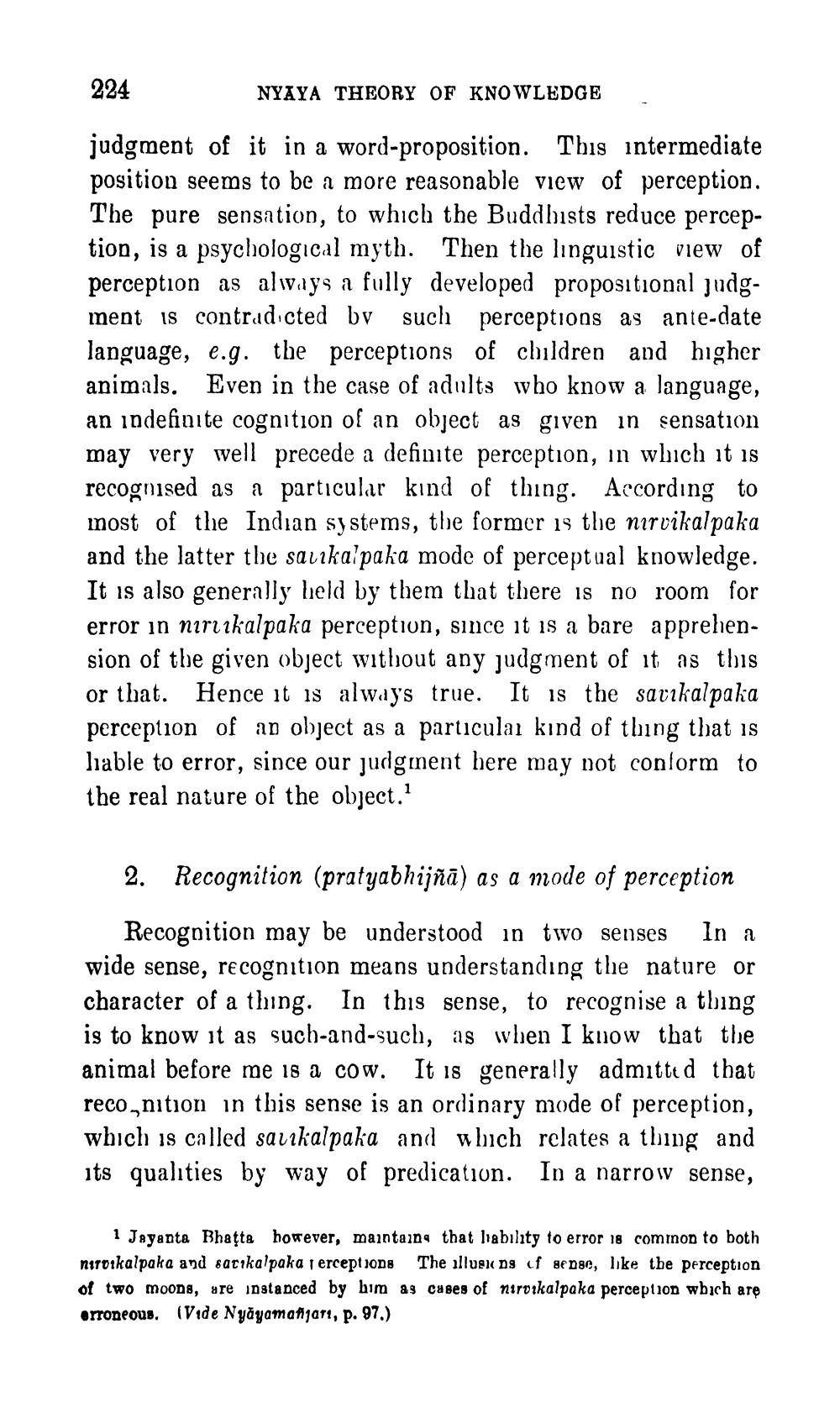________________
224
NYAYA THEORY OF KNOWLEDGE
judgment of it in a word-proposition. This intermediate position seems to be a more reasonable view of perception. The pure sensation, to which the Buddhists reduce perception, is a psychological myth. Then the linguistic view of perception as always a fully developed propositional judgment is contradicted by such perceptions as ante-date language, e.g. the perceptions of children and higher animals. Even in the case of adults who know a language, an indefinite cognition of an object as given in sensation may very well precede a definite perception, in which it is recognised as a particular kind of thing. According to most of the Indian systems, the former is the nirvikalpaka and the latter the sankalpaka mode of perceptual knowledge. It is also generally held by them that there is no room for error in niriikalpaka perception, since it is a bare apprehension of the given object without any judgment of it as this or that. Hence it is always true. It is the savikalpaka perception of an object as a particular kind of thing that is hable to error, since our judgment here may not conform to the real nature of the object.1
2. Recognition (pratyabhijñā) as a mode of perception
Recognition may be understood in two senses In a wide sense, recognition means understanding the nature or character of a thing. In this sense, to recognise a thing is to know it as such-and-such, as when I know that the animal before me is a cow. It is generally admitted that reco,nition in this sense is an ordinary mode of perception, which is called savikalpaka and which relates a thing and its qualities by way of predication. In a narrow sense,
1 Jayanta Bhatta however, maintains that liability to error 18 common to both nirvikalpaka and sarıkalpaka 1erceptions The illusions of sense, like the perception of two moons, are instanced by him as cases of nirvikalpaka perception which are erroneous. (Vide Nyayamanjari, p. 97.)




